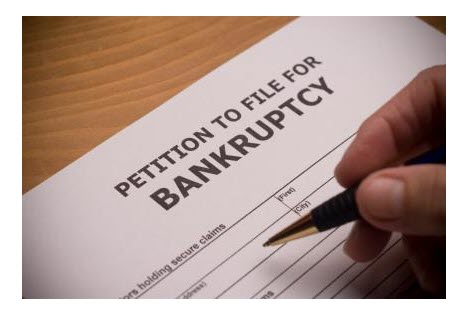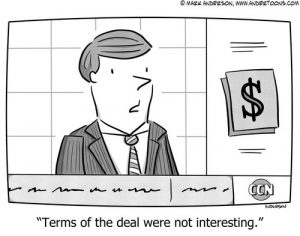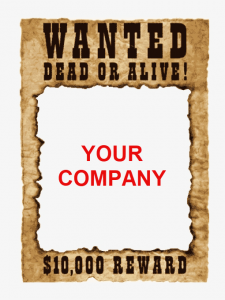 In a bankruptcy, “The basic question is, are they worth more alive or dead?” said Joshua Freidman, global head of Debtwire, in an interview earlier this summer.
In a bankruptcy, “The basic question is, are they worth more alive or dead?” said Joshua Freidman, global head of Debtwire, in an interview earlier this summer.
In this particular case, he was referring to Charming Charlies which was about to file for Chapter 11 for the second time in a little over a year following the first one.
This time around, the apparel and accessories retailer plans to close all of its remaining 261 stores and wind down its business in bankruptcy.
 Over the course of 15 years, Charming Charlie was founded, grew to 400 stores, filed for bankruptcy, failed again and now its second trip through Chapter 11 marks the end of the company’s life.
Over the course of 15 years, Charming Charlie was founded, grew to 400 stores, filed for bankruptcy, failed again and now its second trip through Chapter 11 marks the end of the company’s life.
Founded in 2004, the retailer made its name by its approach to merchandising, grouping products together by color. It had a pricing structure that positioned itself between department stores and teen retailers. Its core customers were women between 35 and 55 who made up 38% of its base.
ASSET BECAME A LIABILITY …
 To execute this merchandising plan required a sophisticated inventory system” to position products by color and theme. But that system, which was the company’s calling card eventually became a liability.
To execute this merchandising plan required a sophisticated inventory system” to position products by color and theme. But that system, which was the company’s calling card eventually became a liability.
“Although this inventory approach provided Charming Charlie with a strategic benefit and engendered significant brand loyalty, it eventually caused the company to be saddled with excess merchandise in under-performing color offerings.” Stated Alvaro Bellon, Charming Charlies CFO.
 The pending demise of Charming Charlie is a virtual checklist of everything that can go wrong in retail and other companies with sophisticated business operations and a significant work force.
The pending demise of Charming Charlie is a virtual checklist of everything that can go wrong in retail and other companies with sophisticated business operations and a significant work force.
Over time, the company became caught in a death spiral. Before its first Chapter 11, the company grew its brick and mortar too quickly, built out an over-broad vendor base and was subjected to broad structural changes in the industry as customers turned away from malls and other physical retail outlets.
TO SAVE MONEY …
 To save money, the company hacked away at its workforce, sometimes only having one associate to run a store for hours. That hurt the retailer’s ability to convert traffic and led to poaching of remaining employees.
To save money, the company hacked away at its workforce, sometimes only having one associate to run a store for hours. That hurt the retailer’s ability to convert traffic and led to poaching of remaining employees.
Numerous factors including “onerous leases” and liquidity problems made it “increasingly difficulty” to pay expenses, including $47.4 million in annual rent costs and $81 million in debt, according to court documents quoting the CFO.
 To help with the liquidity issues, the company “hastily” expanded its inventory to boost the money available under its asset-based loan. But that created piles of merchandise that was either off-brand or not of the quality their customers expected.
To help with the liquidity issues, the company “hastily” expanded its inventory to boost the money available under its asset-based loan. But that created piles of merchandise that was either off-brand or not of the quality their customers expected.
Following the initial Chapter 11, suppliers didn’t ease the terms they demanded from the company until several months after it exited. That made it harder to get better quality merchandise on to the shelves.
Finally, after experiencing all of this, the company finally brought in financial advisors to review its business plan and its options.
![]() With the help of the advisors, the company refinanced a loan. But it was too little, too late and Debtwire reported that the company was still facing a “liquidity crisis”.
With the help of the advisors, the company refinanced a loan. But it was too little, too late and Debtwire reported that the company was still facing a “liquidity crisis”.
As the company prepared to file for Chapter 11 again, it was clear that the Charming Charlie would not make it.
IN OUR BANKRUPTCY SYSTEM …
 So, how does this happen? In our bankruptcy system, it is difficult to distinguish a company in financial distress from an economically failed enterprise and it is doubtful that the current reorganization system is very accurate at making the distinction.
So, how does this happen? In our bankruptcy system, it is difficult to distinguish a company in financial distress from an economically failed enterprise and it is doubtful that the current reorganization system is very accurate at making the distinction.
Once in Chapter 11, the decision to reorganize or not is made by a bankruptcy judge rather than the market.
 Also, the decision of whether to file is made by the debtor and the debtors management staff that have a vested interest in pushing for reorganization and preserving their jobs and ownership.
Also, the decision of whether to file is made by the debtor and the debtors management staff that have a vested interest in pushing for reorganization and preserving their jobs and ownership.
Secured creditors will generally accept a reorganization only if the company is worth more alive than dead. But unsecured creditors, who have no hope of recovery if the company is killed, have an incentive to push for reorganization, even if there is a tiny probability that reorganization will work.
GET INDEPENDENT ASSISTANCE …
 The economic cost of inefficient reorganization can be substantial. The direct costs of bankruptcy, even for smaller companies, can run to hundreds of thousands of dollars in professional fees. If the chances of success are small, the costs to the estate can be prohibitive.
The economic cost of inefficient reorganization can be substantial. The direct costs of bankruptcy, even for smaller companies, can run to hundreds of thousands of dollars in professional fees. If the chances of success are small, the costs to the estate can be prohibitive.
 The time to get independent assistance from experienced advisors with expertise in operational restructuring is when the true economic viability of the company can be determined, and the value of assets can be maximized.
The time to get independent assistance from experienced advisors with expertise in operational restructuring is when the true economic viability of the company can be determined, and the value of assets can be maximized.
This is where the difference between operational or just financial help can make the greatest difference.
And that assistance should be requested long before bankruptcy is considered. The lessons of Charming Charlie are those for every company, even in slight economic risk, to consider.
Revitalization Partners is a Northwest business advisory and restructuring management firm with a demonstrated track record of achieving the best possible outcomes for our clients. And now, we’ve written a book to help our readers understand the issues facing their businesses. You can find this compilation of our business thoughts at: https://revitalizationpartners.com/we-could-write-a-book/ or on Amazon.
We specialize in improving the operational and financial results of companies and providing hands-on expertise in virtually every circumstance, with a focus on small and mid-market organizations.
Whether your requirement is Interim Management, a Business Assessment, Revitalization and Reengineering or Receivership/Bankruptcy Support, we focus on giving you the best resolution in the fastest time with the highest possible return.


